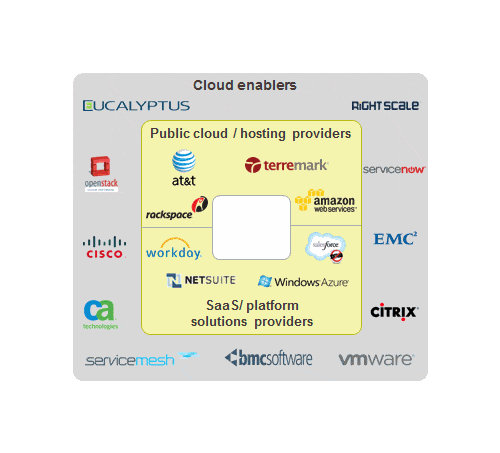Enterprise Mobility: Let’s Move BYOnD | Gaining Altitude in the Cloud
Bestselling author Nassim Taleb talks in one of his books about the anti-fragile, things that enjoy extreme conditions and thrive in disorder. Enterprise mobility appears to be a creature that loves disruptions in the technology market. With Microsoft’s recent reorganization, Amazon’s enhanced focus on Kindle, the never-ending rivalry between Apple, Google, and Samsung, and the queue of other players vying for this market, (Canonical, Dell, HP, and Lenovo), this disruption phenomenon is not going to fade anytime soon. In fact, when combined with the aspirations of organizations to allow enterprise application mobile avatars, and technology companies developing mobile enterprise application platforms, we have a perfect storm in the making.
However, many organizations still believe that allowing “toys in the workplace” is a good enough IT response to the CEO’s clarion call for employee appeasement and productivity. They are under a strange assumption that Bring Your Own Device (BYOD) = Enterprise Mobility. Fortunately, it is NOT; rather, it’s time to move BYonD it.
While mobile device/application management providers such as AirWatch, BoxTone, Citrix, Kony, SAP, and Sophos are witnessing good traction, they have not even touched the tip of the proverbial iceberg due to the limited availability of enterprise applications on mobile devices. However, despite business users’ clamouring for more enterprise applications on mobile, it is not surprising that organizations are slow to adopt.
Smartphones (e.g., from Apple, Blackberry, Google, HTC, Nokia, and Samsung), tablets (e.g., from Amazon, Apple, Dell, Microsoft, and Samsung), and their brethren indeed improve user productivity, but are largely focused on consuming information, rather than enabling performance of complex tasks beyond emailing and web surfing. Combined with the rapid pace of evolving technologies, form factors, and software, buyer organizations are unwilling to invest upfront and, therefore, continue to be fence sitters. In response, device makers show little interest in offering broader capabilities that can help enterprises move beyond BYOD (e.g., partnering with enterprise application platform providers).
However, the inflexion point has arrived. We will witness device makers, enterprise application providers, and mobile app developers coming together to offer factory-fitted popular enterprise mobile apps much like instant messengers (e.g., HR management, inventory management, CRM, social commerce). Moreover, this trinity will make various enterprise applications available on mobile devices, which we cannot even imagine today. Enterprise application providers will also enable easy access to their/partner’s application marketplace via collaboration with the device and network providers. This will enable end-users to seamlessly use their personal devices to access enterprise-class mobile applications.
Enterprises may also experiment with private app stores, as they increasingly require custom-built applications and are not entirely satisfied with a public distribution model. The challenge for them will be creating a platform-agnostic, “no lock-down,” mobility store. They can also develop innovative funding models in which users are incentivized to deploy mobile enterprise applications in return for funding for their personal device. Yet, these efforts will require significant investment and management commitment. Moreover, unlike other technology initiatives, these should be led by both IT and the business users.
Without a meaningful mobile enterprise application strategy, mobility will indeed become an undesirable “anti-fragile” that thrives in disorder.
If you are planning to or already deploying enterprise mobility and want to share your story, please reach out to me at [email protected].

